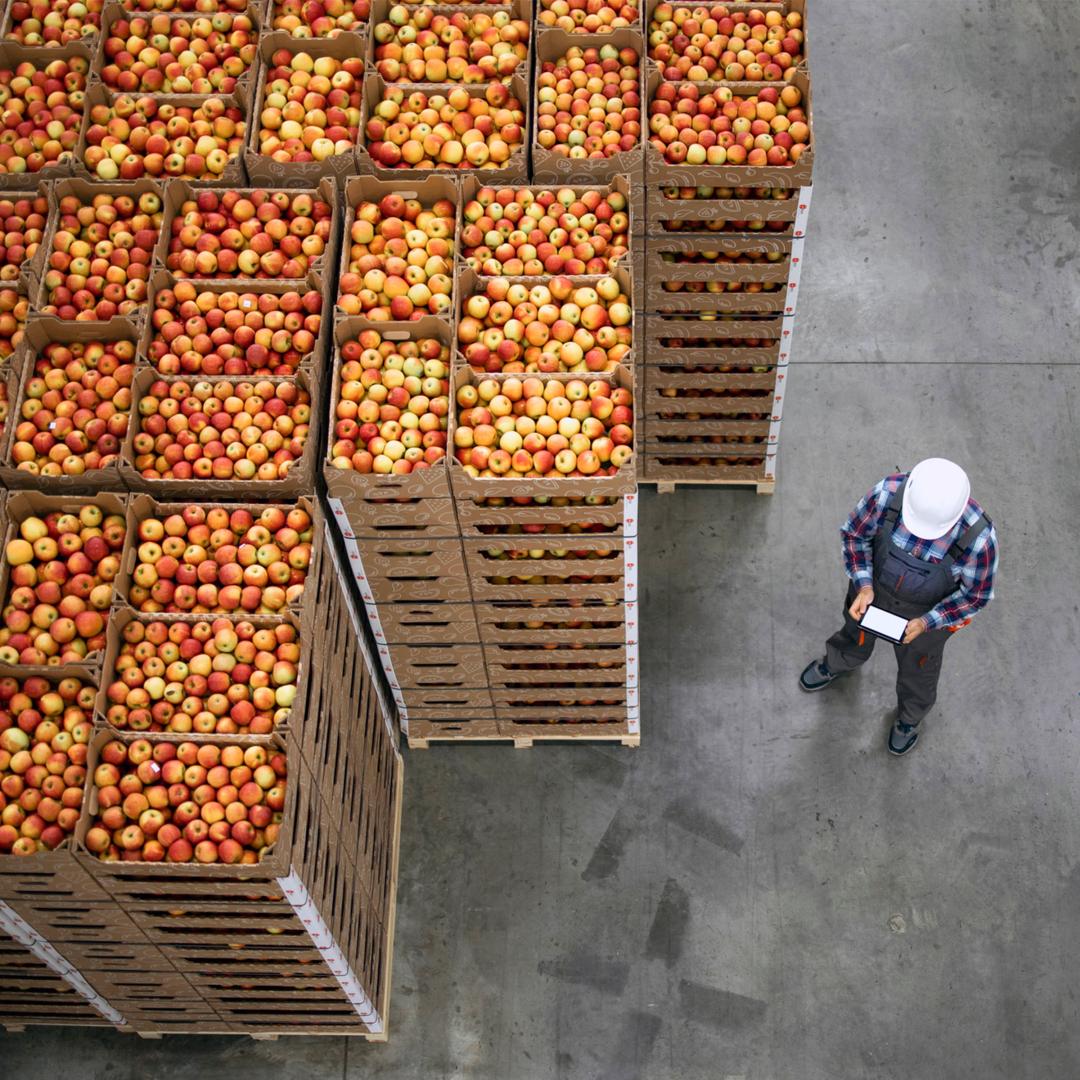Bai, Y., Alemu, R., Block, S. A., Headey, D., & Masters, W. A. (2021). Cost and affordability of nutritious diets at retail prices: Evidence from 177 countries. Food policy, 99, Article 101983. Link to source: https://doi.org/10.1016/j.foodpol.2020.101983
Bouvard, V., Loomis, D., Guyton, K. Z., Grosse, Y., Ghissassi, F. E., Benbrahim-Tallaa, L., Guha, N., Mattock, H., & Straif, K. (2015). Carcinogenicity of consumption of red and processed meat. The Lancet Oncology, 16(16), 1599–1600. https://doi.org/10.1016/S1470-2045(15)00444-1
Bradbury, K. E., Murphy, N., & Key, T. J. (2020). Diet and colorectal cancer in UK Biobank: A prospective study. International Journal of Epidemiology, 49(1), 246–258. Link to source: https://doi.org/10.1093/ije/dyz064
Casey, J. A., Curriero, F. C., Cosgrove, S. E., Nachman, K. E., & Schwartz, B. S. (2013). High-density livestock operations, crop field application of manure, and risk of community-associated methicillin-resistant Staphylococcus aureus infection in Pennsylvania. JAMA Internal Medicine, 173(21), 1980–1990. Link to source: https://doi.org/10.1001/jamainternmed.2013.10408
Domingo, N. G. G., Balasubramanian, S., Thakrar, S. K., Clark, M. A., Adams, P. J., Marshall, J. D., Muller, N. Z., Pandis, S. N., Polasky, S., Robinson, A. L., Tessum, C. W., & Hill, J. D. (2021). Air quality–related health damages of food. Proceedings of the National Academy of Sciences, 118(20), Article e2013637118. Link to source: https://doi.org/10.1073/pnas.2013637118
Foley, J. A., Ramankutty, N., Brauman, K. A., Cassidy, E. S., Gerber, J. S., Johnston, M., Mueller, N. D., O’Connell, C., Ray, D. K., West, P. C., Balzer, C., Bennett, E. M., Carpenter, S. R., Hill, J., Monfreda, C., Polasky, S., Rockström, J., Sheehan, J., Siebert, S., ... Zaks, D. P. M. (2011). Solutions for a cultivated planet. Nature, 478, 337–342. Link to source: https://doi.org/10.1038/nature10452
Food and Agriculture Organization of the United Nations (FAO). (2025). FAO‑FAOSTAT: Food balances (2010-) [Data set]. Food balances for individual countries for the year 2022 (most recent year available). Retrieved March 25, 2025, from Link to source: https://www.fao.org/faostat/en/#data/FBS
Food and Agriculture Organization of the United Nations (FAO). (2023). Low-Income Food-Deficit Countries (LIFDCs) - List updated June 2023. Retrieved March 25, 2025, from Link to source: https://www.fao.org/member-countries/lifdc/en
Food and Agriculture Organization of the United Nations (FAO). (2017). Livestock solutions for climate change [Technical paper]. Link to source: https://www.fao.org/family-farming/detail/en/c/1634679/
Gerber, P. J., Steinfeld, H., Henderson, B., Mottet, A., Opio, C., Dijkman, J., Falcucci, A., & Tempio, G. (2013). Tackling climate change through livestock: A global assessment of emissions and mitigation opportunities [Report]. Food and Agriculture Organization of the United Nations. Link to source: https://www.fao.org/4/i3437e/i3437e00.htm
Godfray, H. C. J., Aveyard, P., Garnett, T., Hall, J. W., Key, T. J., Lorimer, J., Pierrehumbert, R. T., Scarborough, P., Springmann, M., & Jebb, S. A. (2018). Meat consumption, health, and the environment. Science, 361(6399), Article eaam5324. Link to source: https://doi.org/10.1126/science.aam5324
Gupta, S., Vemireddy, V., Singh, D. K., & Pingali, P. (2021). Ground truthing the cost of achieving the EAT lancet recommended diets: Evidence from rural India. Global Food Security, 28, Article 100498. Link to source: https://doi.org/10.1016/j.gfs.2021.100498
Halpern, B. S., Frazier, M., Verstaen, J., Rayner, P.-E., Clawson, G., Blanchard, J. L., Cottrell, R. S., Froehlich, H. E., Gephart, J. A., Jacobsen, N. S., Kuempel, C. D., McIntyre, P. B., Metian, M., Moran, D., Nash, K. L., Többen, J., & Williams, D. R. (2022). The environmental footprint of global food production. Nature Sustainability, 5, 1027–1039. Link to source: https://doi.org/10.1038/s41893-022-00965-x
Harter, T., Lund, J. R., Darby, J., Fogg, G. E., Howitt, R., Jessoe, K. K., Pettygrove, G. S., Quinn, J. F., Viers, J. H., Boyle, D. B., Canada, H. E., De La Mora, N., Dzurella, K. N., Fryjoff-Hung, A., Hollander, A. D., Honeycutt, K. L., Jenkins, M. W., Jensen, V. B., King, A. M., ... Rosenstock, T. S. (2012). Addressing nitrate in California’s drinking water with a focus on Tulare Lake Basin and Salinas Valley groundwater [Report]. Center for Watershed Sciences, University of California. Link to source: https://ucanr.edu/sites/default/files/2012-03/138956.pdf
Heederik, D., Sigsgaard, T., Thorne, P. S., Kline, J. N., Avery, R., Bønløkke, J. H., Chrischilles, E. A., Dosman, J. A., Duchaine, C., Kirkhorn, S. R., Kulhanková, K., & Merchant, J. A. (2007). Health effects of airborne exposures from concentrated animal feeding operations. Environmental Health Perspectives, 115(2), 298–302. Link to source: https://doi.org/10.1289/ehp.8835
Herrero, M., Henderson, B., Havlík, P., Thornton, P. K., Conant, R. T., Smith, P., Wirsenius, S., Hristov, A. N., Gerber, P., Gill, M., Butterbach-Bahl, K., Valin, H., Garnett, T., & Stehfest, E. (2016). Greenhouse gas mitigation potentials in the livestock sector. Nature Climate Change, 6(5), 452–461. Link to source: https://doi.org/10.1038/nclimate2925
Hirvonen, K., Bai, Y., Headey, D., & Masters, W. A. (2020). Affordability of the EAT–Lancet reference diet: A global analysis. The Lancet Global Health, 8(1), e59–e66. Link to source: https://doi.org/10.1016/S2214-109X(19)30447-4
Intergovernmental Panel on Climate Change. (2023). Climate change 2023: Synthesis report. Contribution of working groups I, II and III to the sixth assessment report of the intergovernmental panel on climate change [Core Writing Team, H. Lee, & J. Romero (Eds.)]. Link to source: https://doi.org/10.59327/IPCC/AR6-9789291691647
Jackson, R. B., Saunois, M., Martinez, A., Canadell, J. G., Yu, X., Li, M., Poulter, B., Raymond, P. A., Regnier, P., Ciais, P., Davis, S. J., & Patra, P. K. (2024). Human activities now fuel two-thirds of global methane emissions. Environmental Research Letters, 19(10), Article 101002. Link to source: https://doi.org/10.1088/1748-9326/ad6463
Kaluza, J., Wolk, A., & Larsson, S. C. (2012). Red meat consumption and risk of stroke: A meta-analysis of prospective studies. Stroke, 43(10), 2556–2560. Link to source: https://doi.org/10.1161/STROKEAHA.112.663286
Katare, B., Wang, H. H., Lawing, J., Hao, N., Park, T., & Wetzstein, M. (2020). Toward optimal meat consumption. American Journal of Agricultural Economics, 102(2), 662–680. Link to source: https://doi.org/10.1002/ajae.12016
Kim, B. F., Santo, R. E., Scatterday, A. P., Fry, J. P., Synk, C. M., Cebron, S. R., Mekonnen, M. M., Hoekstra, A. Y., de Pee, S., Bloem, M. W., Neff, R. A., & Nachman, K. E. (2020). Country-specific dietary shifts to mitigate climate and water crises. Global Environmental Change, 62, Article 101926. Link to source: https://doi.org/10.1016/j.gloenvcha.2019.05.010
Li, M., Wang, Y., Zhao, S., Chen, W., Liu, Y., Zheng, H., Sun, Z., He, P., Li, R., Zhang, S., Xing, P., & Li., Q. (2024). Improving the affordability and reducing greenhouse gas emissions of the EAT-Lancet diet in China. Sustainable Production and Consumption, 52, 445–457. Link to source: https://doi.org/10.1016/j.spc.2024.11.014
Li, Y., He, P., Shan, Y., Li, Y., Hang, Y., Shao, S., Ruzzenenti, F., & Hubacek, K. (2024). Reducing climate change impacts from the global food system through diet shifts. Nature Climate Change, 14(9), 943–953. Link to source: https://doi.org/10.1038/s41558-024-02084-1
Mariotti, F., & Gardner, C. D. (2019). Dietary protein and amino acids in vegetarian diets—A review. Nutrients, 11(11), Article 2661. Link to source: https://doi.org/10.3390/nu11112661
Mbow, C., Rosenzweig, C., Barioni, L. G., Benton, T. G., Herrero, M., Krishnapillai, M., Liwenga, E., Pradhan, P., Rivera-Ferre, M. G., Sapkota, T., Tubiello, F. N., & Xu, Y. (2019). Food security. In P. R. Shukla, J. Skea, E. Calvo Buendia, V. Masson-Delmotte, H.-O. Pörtner, D. C. Roberts, P. Zhai, R. Slade, S. Connors, R. van Diemen, M. Ferrat, E. Haughey, S. Luz, S. Neogi, M. Pathak, J. Petzold, J. Portugal Pereira, P. Vyas, E. Huntley, K. Kissick, M. Belkacemi, & J. Malley (Eds.), Climate change and land: An IPCC special report on climate change, desertification, land degradation, sustainable land management, food security, and greenhouse gas fluxes in terrestrial ecosystems (pp. 437–550). Cambridge University Press. Link to source: https://doi.org/10.1017/9781009157988.007
Meier, T., & Christen, O. (2013). Environmental impacts of dietary recommendations and dietary styles: Germany as an example. Environmental Science & Technology, 47(2), 877–888. Link to source: https://doi.org/10.1021/es302152v
Nelson, M. E., Hamm, M. W., Hu, F. B., Abrams, S. A., & Griffin, T. S. (2016). Alignment of healthy dietary patterns and environmental sustainability: A systematic review. Advances in Nutrition, 7(6), 1005–1025. Link to source: https://doi.org/10.3945/an.116.012567
Nijdam, D., Rood, T., & Westhoek, H. (2012). The price of protein: Review of land use and carbon footprints from life cycle assessments of animal food products and their substitutes. Food Policy, 37(6), 760–770. Link to source: https://doi.org/10.1016/j.foodpol.2012.08.002
Norwood, F. B., & Lusk, J. L. (2011). Compassion, by the pound: The economics of farm animal welfare. Oxford University Press. Link to source: https://global.oup.com/academic/product/compassion-by-the-pound-9780199551163?cc=ca&lang=en&
Pan, A., Sun, Q., Bernstein, A. M., Schulze, M. B., Manson, J. E., Willett, W. C., & Hu, F. B. (2011). Red meat consumption and risk of type 2 diabetes: 3 cohorts of US adults and an updated meta-analysis. The American Journal of Clinical Nutrition, 94(4), 1088–1096. Link to source: https://doi.org/10.3945/ajcn.111.018978
Pan, A., Sun, Q., Bernstein, A. M., Schulze, M. B., Manson, J. E., Stampher, M. J., Willett, W. C., & Hu, F. B. (2012). Red meat consumption and mortality: Results from 2 prospective cohort studies. Archives of Internal Medicine, 172(7), 555–563. Link to source: https://doi.org/10.1001/archinternmed.2011.2287
Pimentel, D., & Pimentel, M. (2003). Sustainability of meat-based and plant-based diets and the environment. The American Journal of Clinical Nutrition, 78(3), 660S–663S. Link to source: https://doi.org/10.1093/ajcn/78.3.660S
Poore, J., & Nemecek, T. (2018) Reducing food’s environmental impacts through producers and consumers. Science, 360(6392), 987–992. Link to source: https://doi.org/10.1126/science.aaq0216
Porter, S., & Cox, C. (2020, May 28). Manure overload: Manure plus fertilizer overwhelms Minnesota’s land and water. Environmental Working Group. Link to source: https://www.ewg.org/interactive-maps/2020-manure-overload/
Ripple, W. J., Smith, P., Haberl, H., Montzka, S. A., McAlpine, C., & Boucher, D. H. (2014a). Ruminants, climate change and climate policy. Nature Climate Change, 4(1), 2–5. Link to source: https://doi.org/10.1038/nclimate2081
Ripple, W. J., Estes, J. A., Beschta, R. L., Wilmers, C. C., Ritchie, E. G., Hebblewhite, M., Berger, J., Elmhagen, B., Letnic, M., Nelson, M. P., Schmitz, O. J., Smith, D. W., Wallach, A. D., & Wirsing, A. J. (2014b). Status and ecological effects of the world’s largest carnivores. Science, 343(6167), Article 1241484. Link to source: https://doi.org/10.1126/science.1241484
Ripple, W. J., Newsome, T. M., Wolf, C., Dirzo, R., Everatt, K. T., Galetti, M., Hayward, M. W., Kerley, G. I. H., Levi, T., Lindsey, P. A., Macdonald, D. W., Malhi, Y., Painter, L. E., Sandom, C. J., Terborgh, J., & Van Valkenburgh, B. (2015). Collapse of the world’s largest herbivores. Science Advances, 1(4), Article e1400103. Link to source: https://doi.org/10.1126/sciadv.1400103
Searchinger, T., Waite, R., Hanson, C., Ranganathan, J., Dumas, P., Matthews, E., & Klirs, C. (2019). Creating a sustainable food future: A menu of solutions to feed nearly 10 billion people by 2050 [Report]. World Resources Institute. Link to source: https://research.wri.org/wrr-food
Sinha, R., Cross, A. J., Graubard, B. I., Leitzmann, M. F., & Schatzkin, A. (2009). Meat intake and mortality: A prospective study of over half a million people. Archives of Internal Medicine, 169(6), 562–571. Link to source: https://doi.org/10.1001/archinternmed.2009.6
Springmann, M., Clark, M. A., Rayner, M., Scarborough, P., & Webb, P. (2021). The global and regional costs of healthy and sustainable dietary patterns: A modelling study. The Lancet Planetary Health, 5(11), e797–e807. Link to source: https://doi.org/10.1016/S2542-5196(21)00251-5
Steinfeld, H., Gerber, P., Wassenaar, T., Castel, V., Rosales, M., & de Haan, C. (2006). Livestock’s long shadow: Environmental issues and options [Report]. Food and Agriculture Organization of the United Nations. Link to source: https://www.fao.org/4/a0701e/a0701e00.htm
Sun, J., Liao, X.-P., D’Souza, A. W., Boolchandani, M., Li, S.-H., Cheng, K., Luis Martínez, J., Li, L., Feng, Y.-J., Fang, L.-X., Huang, T., Xia, J., Yu, Y., Zhou, Y.-F., Sun, Y.-X., Deng, X.-B., Zeng, Z.-L., Jiang, H.-X., Fang, B.-H., … Liu, Y.-H. (2020). Environmental remodeling of human gut microbiota and antibiotic resistome in livestock farms. Nature Communications, 11(1), Article 1427. Link to source: https://doi.org/10.1038/s41467-020-15222-y
Tang, K. L., Caffrey, N. P., Nóbrega, D. B., Cork, S. C., Ronksley, P. E., Barkema, H. W., Polachek, A. J., Ganshorn, H., Sharma, N., Kellner, J. D., & Ghali, W. A. (2017). Restricting the use of antibiotics in food-producing animals and its associations with antibiotic resistance in food-producing animals and human beings: A systematic review and meta-analysis. The Lancet Planetary Health, 1(8), e316–e327. Link to source: https://doi.org/10.1016/S2542-5196(17)30141-9
Toumpanakis, A., Turnbull, T., & Alba-Barba, I. (2018). Effectiveness of plant-based diets in promoting well-being in the management of type 2 diabetes: A systematic review. BMJ Open Diabetes Research & Care, 6(1), Article e000534. Link to source: https://doi.org/10.1136/bmjdrc-2018-000534
Van Boeckel, T. P., Brower, C., Gilbert, M., Grenfell, B. T., Levin, S. A., Robinson, T. P., Teillant, A., & Laxminarayan, R. (2015). Global trends in antimicrobial use in food animals. Proceedings of the National Academy of Sciences, 112(18), 5649–5654. Link to source: https://doi.org/10.1073/pnas.1503141112
Vergnaud, A.-C., Norat, T., Romaguera, D., Mouw, T., May, A. M., Travier, N., Luan, J., Wareham, N., Slimani, N., Rinaldi, S., Couto, E., Clavel-Chapelon, F., Boutron-Ruault, M.-C., Cottet, V., Palli, D., Agnoli, C., Panico, S., Tumino, R., Vineis, P., … Peeters, P. H. M. (2010). Meat consumption and prospective weight change in participants of the EPIC-PANACEA study. The American Journal of Clinical Nutrition, 92(2), 398–407. Link to source: https://doi.org/10.3945/ajcn.2009.28713
Westhoek, H., Lesschen, J. P., Rood, T., Wagner, S., De Marco, A., Murphy-Bokern, D., Leip, A., van Grinsven, H., Sutton, M. A., & Oenema, O. (2014). Food choices, health and environment: Effects of cutting Europe’s meat and dairy intake. Global Environmental Change, 26, 196–205. Link to source: https://doi.org/10.1016/j.gloenvcha.2014.02.004
Willett, W., Rockström, J., Loken, B., Springmann, M., Lang, T., Vermeulen, S., Garnett, T., Tilman, D., DeClerck, F., Wood, A., Jonell, M., Clark, M., Gordon, L. J., Fanzo, J., Hawkes, C., Zurayk, R., Rivera, J. A., De Vries, W., Majele Sibanda, L., ... Murray, C. J. L. (2019). Food in the Anthropocene: The EAT–Lancet Commission on healthy diets from sustainable food systems. The Lancet, 393(10170), 447–492. Link to source: https://doi.org/10.1016/s0140-6736(18)31788-4
Willits-Smith, A., Odinga, H., O’Malley, K., & Rose, D. (2023). Demographic and socioeconomic correlates of disproportionate beef consumption among US adults in an age of global warming. Nutrients, 15(17), Article 3795. Link to source: https://doi.org/10.3390/nu15173795





